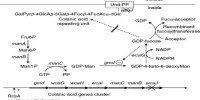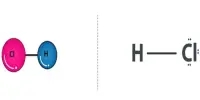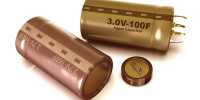Researchers at Japan’s RIKEN Center for Emergent Matter Science (CEMS) have identified a molecule that stores ammonia through a chemical reaction, potentially providing a safer and easier way to store this crucial chemical.
This discovery, which was published in the Journal of the American Chemical Society on July 10, allows for the safe and convenient storage of not only ammonia but also the vital hydrogen it carries. This discovery should pave the road for a decarbonized civilization with a viable hydrogen economy.
Because hydrogen is highly flammable on its own, we need a secure mechanism to store and transport it if humanity is to transition from carbon-based to hydrogen-based energy. You can achieve this by storing it as a component of another molecule and removing it when necessary. Three hydrogen atoms are packed into each molecule of ammonia, which is chemically denoted by the symbol NH3. Nearly 20% of the weight of ammonia is hydrogen.
Ammonia is a gas that is extremely corrosive, which makes it challenging to store and use. Ammonia is currently typically stored by liquefying it in pressure-resistant containers at temperatures far below freezing. At normal temperatures and pressure, porous materials can also retain ammonia, but the storage capacity is modest and the ammonia is not constantly accessible.
The latest research describes the development of perovskite, a material with a peculiar repeating crystal structure that can easily store ammonia and also allows for easy and full retrieval at low temperatures.
Masuki Kawamoto’s team at RIKEN CEMS focused on the perovskite ethyl ammonium lead iodide (EAPbI3), also known chemically as CH3CH2NH3PbI3. They discovered that at ordinary temperature and pressure, its one-dimensional columnar structure conducts a chemical reaction with ammonia, dynamically transforming into a two-dimensional layered structure known as lead iodide hydroxide, or Pb(OH)I.
As a result of this procedure, ammonia is chemically converted and stored within the layered structure. As a result, EAPbI3 may securely store corrosive ammonia gas as a nitrogen compound at -33°C (-27.4°F) in pressurized containers using a method that is far less expensive than liquefication. What’s more, retrieving the ammonia that has been stored is a straightforward operation.
“To our surprise, we found that ammonia stored in ethyl ammonium lead iodide could be easily extracted by heating it gently,” explains Kawamoto. At 50°C (122°F), under vacuum, the nitrogen component that has been kept performs a reverse reaction and transforms back into ammonia.
EAPbI3 is a great medium for handling corrosive gases in a straightforward and economical procedure since it operates at a temperature that is far lower than 150°C (302°F) or more required to extract ammonia from porous compounds. EAPbI3 is a great medium for handling corrosive gases in a straightforward and economical procedure since it operates at a temperature that is far lower than 150°C (302°F) or more required to extract ammonia from porous compounds.
Furthermore, after returning to the one-dimensional columnar form, the perovskite can be reused, allowing ammonia to be stored and retrieved repeatedly. An added benefit of the reaction was that the normally yellow chemical turned white. Kawamoto believes that “the compound’s ability to change color when storing ammonia means that color-based ammonia sensors can be developed to determine the amount of ammonia stored.”
The new storage mechanism has various applications. In the near term, the researchers have created a safe way for storing ammonia, which is already used in a variety of applications ranging from fertilizer to pharmaceuticals to textiles. “In the long run,” adds RIKEN CEMS co-author Yoshihiro Ito, “we hope that this simple and efficient method can be part of the solution for achieving a decarbonized society by using ammonia as a carbon-free hydrogen carrier.”
This research will aid in the achievement of the United Nations’ 2016 Sustainable Development Goals (SDGs), particularly Goal 7: Affordable and clean energy and Goal 13: Climate action.















